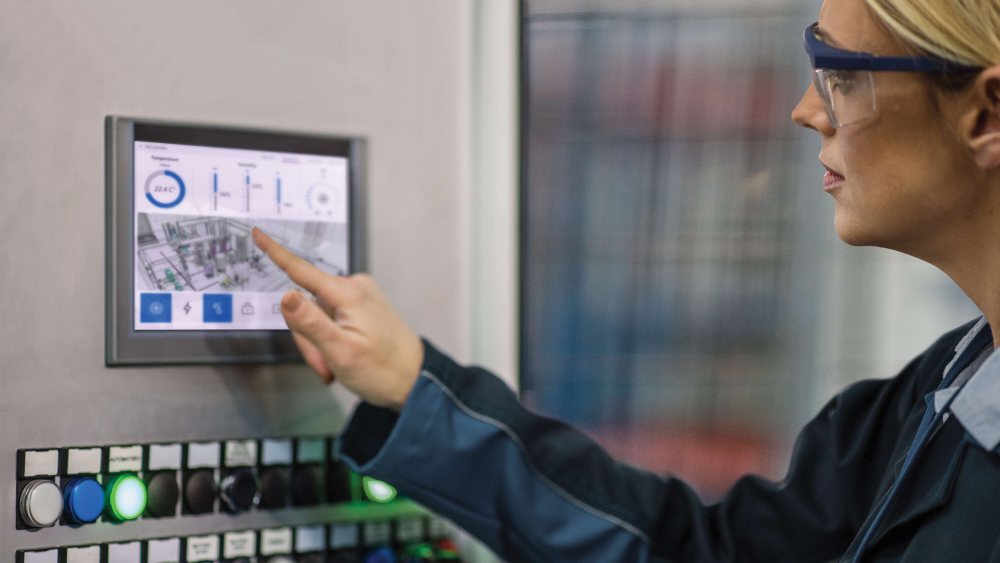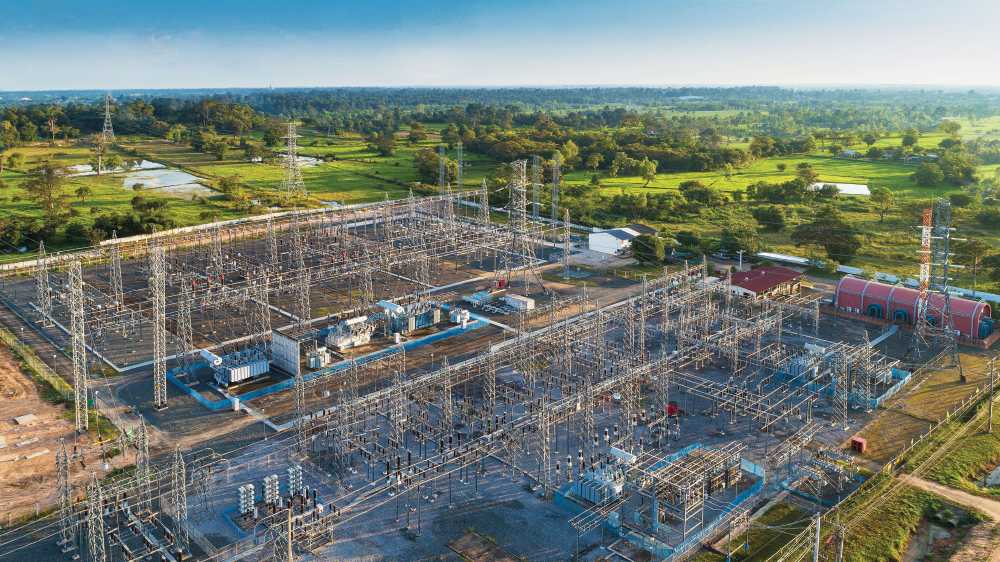From generative AI advancements to virtual reality headsets, technology is transforming every aspect of our lives. Utilities are no different, as digitalization enabled by cellular connectivity brings efficiency and new capabilities to the sector.
Around the world, utility providers are responding to a need for smarter ways to control energy flow. To thrive, utility companies are adapting and harnessing the power of connectivity to build more reliable, secure and flexible digital infrastructures — including smart metering.
Smart meters measure and monitor energy consumption in residential and commercial settings and use cellular networks to transmit data securely and efficiently. Unlike traditional analog meters, they provide real-time information on energy usage, so consumers and utility providers can make informed energy management decisions.
In a survey conducted by Smart Energy GB with almost 10,000 participants in Great Britain, 73% claimed they had done at least one energy-saving activity since getting a smart meter.
Between more accurate billing, remote meter readings, the ability to quickly identify outages and more, smart meters offer a variety of benefits and play a pivotal role in modernizing the grid — saving energy and increasing grid resiliency. But like any technology that depends on connectivity, there are also increased threat surfaces for cyberattacks, and vigilance on that front should be part of any utility considerations as they incorporate smart metering.

Smart utilities grid harness IoT devices and smart meters to measure and monitor energy consumption, driving forward sustainability goals.
Saying goodbye to legacy technology
In the past few years, utility companies in the United States have been working to see how they can modernize their networks and bring cellular networks to smart grids, which comes with a slate of benefits for both utility operations and end customers who receive better, more reliable service.
In the process, providers realize that legacy technology doesn’t provide the infrastructure to keep up with the pace of evolving their networks and connecting more devices. Today, connectivity is everything, and upgrading network infrastructure at utilities is essential to keep up with growing demands more efficiently.
Making the switch to smart meters
Smart meters can track and control energy consumption using remote contact with a metered contact point, which makes it easier to save energy and money. Smart meters and Information Communications Technology (ICT) are like a marriage. When they both work together, they bring new, advanced features and the overall system improves.

Mission-critical network solutions from ICT providers help drive efficient operations across electrical power substations.
Seven key benefits of smart meters:
- Data collection/communication: In the past, crews needed to measure counters at each home and workplace manually. But when a smart meter is connected to a network, it collects data on how much electricity, gas and water is used. Every 15 minutes of every day, the meter collects information and transmits it more accurately and quickly than ever before. This helps eliminate human errors and other challenges, like crews not having access to meters. Ultimately, constant data collection and seamless communication reduce the cost of measuring utility usage and help the system operate more efficiently overall.
- Remote monitoring and control: Smart meters and ICT allow utility companies to provide controlled monitoring on the smart grid. That means that through various sensors, they can collect real-time data and respond to issues quickly and efficiently, leading to lower costs, improved customer satisfaction and more precision when it comes to detecting things like peaks in consumption and failures. With remote monitoring, companies can fix problems before they cause damage or outages, allowing utility companies to operate more efficiently and proactively to provide the best service possible.
- Demand response: Another way to make the system more efficient is by sharing information between utility providers and users — and smart meters are key to facilitating that connection. For example, suppose a consumer has a battery at home and is notified that consumption is peaking and the rate is increasing. In that case, they can opt to use power from batteries instead of from the grid, which saves them money and helps eliminate the load on the system.
- Enhanced data analytics: Smart meters and ICT net-works don’t just allow for data collection; they also enable data analytics that benefit consumers and providers alike. For instance, subscribers can take data that identifies how rates fluctuate throughout the day and change their behavior to save money and energy. If you wanted to charge an electric car, you could figure out when rates are the lowest and charge it then. Likewise, utility companies connected to various nodes can determine where demand is increasing or decreasing and use that data to help them plan for future investments based on that location.
- Grid resilience: Smart meters play a crucial role in optimizing grid efficiency by providing real-time visibility. By strategically placing bellwether meters throughout the distribution circuits, including at the endpoints, smart meters enable accurate monitoring and management of voltage levels, ensuring the grid operates at its most efficient capacity.
- Consumer budgeting - With near real-time usage data provided by smart meters, consumers gain valuable insights into their energy consumption patterns. Armed with this information, they can proactively adjust their usage behavior to align with their budgetary constraints, avoiding any surprises when they receive their bill. As utilities are beginning to recognize the importance of empowering consumers, there is a growing movement to introduce pre-pay capability, akin to pre-pay wireless phones, allowing individuals to monitor and control their energy expenditure and ensuring they do not exceed their affordability limits.
- Remote connect/disconnect - Smart meters revolutionize the way utilities handle move-in and move-out events. By incorporating remote connect/disconnect capabilities, smart meters eliminate the need for utility technicians to visit residences. This not only minimizes delays for customers wanting to make changes but also reduces the utility's operational costs associated with dispatching technicians, which would have otherwise resulted in expensive truck rolls. Smart meters enable seamless and efficient connectivity, improving customer experience and optimizing utility resources.
How smart meters and information communications technology work together
ICT companies design, build and deploy mission-critical networks for utility providers. ICT providers work with utility companies to ensure new smart meters, devices and sensors are connected and operating efficiently, which requires extensive testing and thoughtful design.
The goal is first to determine the best location to build a site and then to define how many devices and crews will need to be connected. It's not just about the number of devices and users — it's also about the use cases of that particular site. For example, video surveillance requires more capacity, so choosing the best spectrum to meet that need is essential. Every element of the ecosystem needs to work together, and it's vital to test the interoperability of each component before deploying.
Testing is also crucial. Various utilities need to be tested for compatibility, security and reliability on cellular networks to ensure that the networks can support an ecosystem of industry-specific use cases and devices. This testing allows key industry players to pioneer new use cases with confidence.
For a modernized grid to work, there needs to be standardized technology. Standardized technology allows an ecosystem to be implemented and evolve as technologies change over time. With more players in the ecosystem, the ecosystem evolves faster and more seamlessly, and ultimately, customers benefit.
Understanding smart grid cybersecurity risks
As important as it is to ensure the system is optimized and devices are working together, it’s just as important to keep the network safe from vulnerabilities. With any new technology comes new cybersecurity threats, and smart grids are no different. And to mitigate security risks, it’s essential first to understand what they are — so let’s break down a few of the most pressing threats.
- Unauthorized access: Bad actors may attempt to connect false base stations to the grid to gain unauthorized access to control systems and disrupt operations.
- Denial-of-Service (DoS) attacks: In these attacks, hackers can overwhelm systems with excessive traffic or requests, leading to service disruptions that affect the availability and reliability of the grid.
- Malware and ransomware: Malicious software can be deployed to infect and compromise devices within the smart grid network. Ransomware attacks can encrypt data or systems, rendering them inaccessible until a ransom is paid.
- Communication interception: Attackers may attempt to intercept or manipulate communication within the network by installing false base stations, allowing them to gather sensitive information or send malicious commands.
Mitigating risks and securing the grid
Security is key for mission-critical networks, and three key pillars can help prevent attacks and protect smart power grids.
- Authentication: LTE networks can verify a SIM’s identity by challenging it for the right keys and results. That way, devices can be blocked from the network to prevent rogue SIMs from accessing the network. Application-level authentication mechanisms can also be used to ensure authentication from device to application.
- Integrity: Checksums are used to ensure that the received message is the same as that transmitted. This mitigates man-in-the-middle attacks. Denial-of-Service attacks are addressed with algorithms that use EPC keys to track sequential LTE message counts and avoid rogue network nodes from intercepting signaling in the network. Encrypting data with a key known only to the LTE receiver guards can protect against hackers listening to the data.
- Advanced security management systems: This system is designed to detect and identify abnormal events and behaviors, such as false base stations and anomalous devices, thereby mitigating potential risks. By leveraging sophisticated algorithms and real-time monitoring, the security management system scrutinizes network traffic, communication patterns and device activities to promptly identify and respond to potential threats. Through its proactive approach, the system enhances the overall security posture of ICT infrastructure, safeguarding against unauthorized access, data breaches and other cybersecurity vulnerabilities.
Paving the way for a more sustainable ecosystem
The pressure to seek sustainable solutions and reduce the carbon footprints of our homes, businesses, government institutions, schools and more is only growing. At the same time, the electricity demand is expanding. Over the next two decades, electricity demand is expected to grow at a 2% compounded annual growth rate (CAGR) , according to IEA. So, how can utility companies work toward a sustainable future while keeping up with demands?
Switching up the energy mix and growing renewable resources is essential, but it’s also important to consider how changes like smart meters can impact carbon footprints. Benefits like real-time monitoring allow businesses and individuals alike to effectively monitor their energy usage and make informed decisions about reducing energy waste and adopting more sustainable habits. And as renewable energy sources are incorporated into the grid, real-time data on energy supply and demand can be used to distribute renewable energy where it’s needed.
Utility providers are faced with a delicate challenge to keep up with demand while implementing changes to reduce emissions. But there is no magic solution — instead, each element of the ecosystem adds up to work together toward a smarter, more sustainable grid.
Building a thriving ecosystem for the future
The modern world's infrastructure depends on reliable electrical power sources to power our homes, businesses, schools, hospitals and more every day. Structural changes like making the move to smart meters aren't just nice-to-haves — they're essential to ensure a more flexible, secure and reliable power grid as we head into the future.

Elisiario Cunha Neto is VP, CTO in Customer Unit Business Development for Market Area North America. He has 26 years of experience in Telecom/ICT Market, 14 years at Telecom Operators and 12 years in Ericsson, working with Vodafone Group, TIM - Telecom Italy, US Cellular, US Government, North America Investor-Owned Utilities, TowerCo and Cable Operators. He heads up the technology solutions team that drives all interactions with our customers for technology pre-sales and sales, design and product development.







